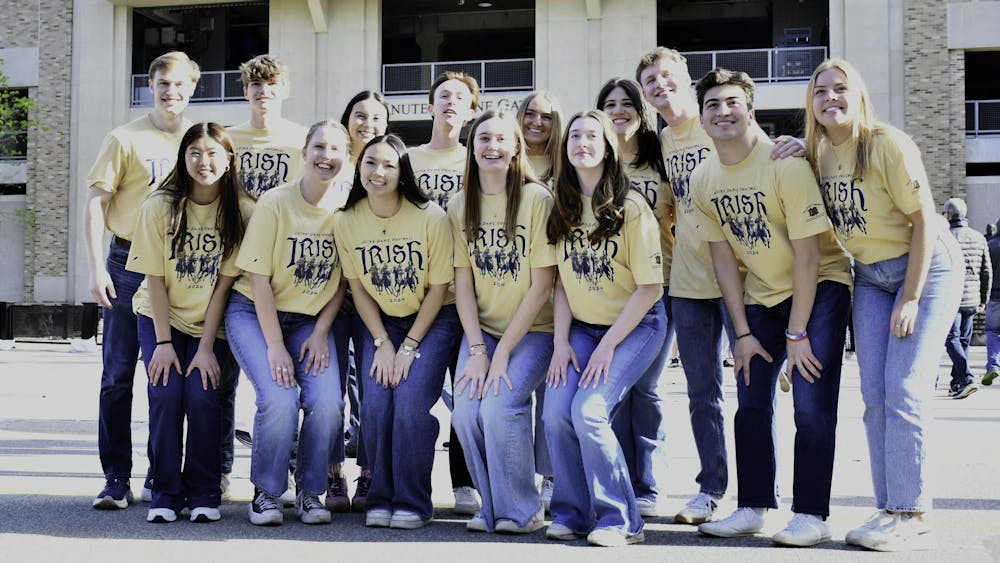While many are familiar with the work of director Alfred Hitchcock, not many know that Hitchcock often integrated Catholic themes into his films.
Thomas Hibbs, dean of the honors college and professor of philosophy at Baylor University, highlighted Catholic and noir themes in the 1953 film “I Confess” on Tuesday night in a lecture in the Center for Ethics and Culture’s Catholic Culture Series.
The film, which stars Montgomery Clift, centers around the struggles of a priest named Fr. Michael Logan who is suspected of murder and cannot prove his innocence without revealing what he heard in the confessional.
“I Confess” fits with the film noir tradition, not only using features like a “femme fatale” — played by the character of Ruth Grandfort — but also with stylistic techniques like eschew camera angels, strong dark and light contrasts and sinister music, Hibbs said.
“The raise in the critical acclaim of Hitchcock has something to do with the recognition of Hitchcock as a self-conscious filmmaker; that is, someone who is constantly thinking about the camera,” he said.
Hibbs said “I Confess” also draws on the noir use of flashbacks.
“In noir films, we don’t move forward out of the past … We move forward, and the past comes up and punches us in the face,” he said.
Hibbs quoted Hitchcock’s thesis of films as “the stronger the evil, the stronger the film,” and said this comes across in “I Confess.”
“This film builds in a way so the evil becomes stronger in particular individuals, and evil becomes stronger in the sense that it spreads,” he said.
Unlike classic noir films, Hibbs said that in “I Confess,” Hitchcock pivots the film with a key scene that draws similarities between Fr. Logan and Christ by showing the priest walking past a statue of Christ carrying the cross.
“What we see as viewers ... is that Logan is undergoing a passion akin to Christ’s passion,” Hibbs said. “There’s actually a larger narrative here than the narrative of entrapment and unintelligibility and lack of progress [commonly seen in noir films].
“The larger narrative is that his suffering is going to pattern on, in some sense, the suffering of Christ. That scene is visually the key scene in the whole movie.”
The film ends with ideas from the comedy of remarriage strategy, portraying the “femme fatale” Ruth going home with her husband and Fr. Logan having the chance to renew his priestly vows, Hibbs said.
“He has, in this Christ-like trial that he undergoes, an opportunity to recommit himself, to have a second marriage to Christ as a priest,” he said.
Hibbs said that while many see Hitchcock as only an entertainer, many of his works explore deep themes.
“[Hitchcock’s] best films really show that this popular medium can be a matter through which the deepest issues of high culture are explored through a distinctive medium,” Hibbs said. “This is a film that touches on some of the deepest questions, and does so in a fairly explicit theological way.”













